14 National Blueberry Muffin Day Blueberry Bush Garden Ideas

Hey there, if you’re looking to celebrate National Blueberry Muffin Day with homegrown flavor, let’s start with crafting the perfect blueberry bush garden. You’ll need to select varieties like northern highbush for cold zones or southern types for warmer climates, ensuring ideal growth. Pay close attention to soil pH—it must be acidic, between 4.5 and 5.5. Curious about maximizing your yield with innovative setups? Stick around for more insights.
Choosing the Perfect Blueberry Varieties for Your Garden
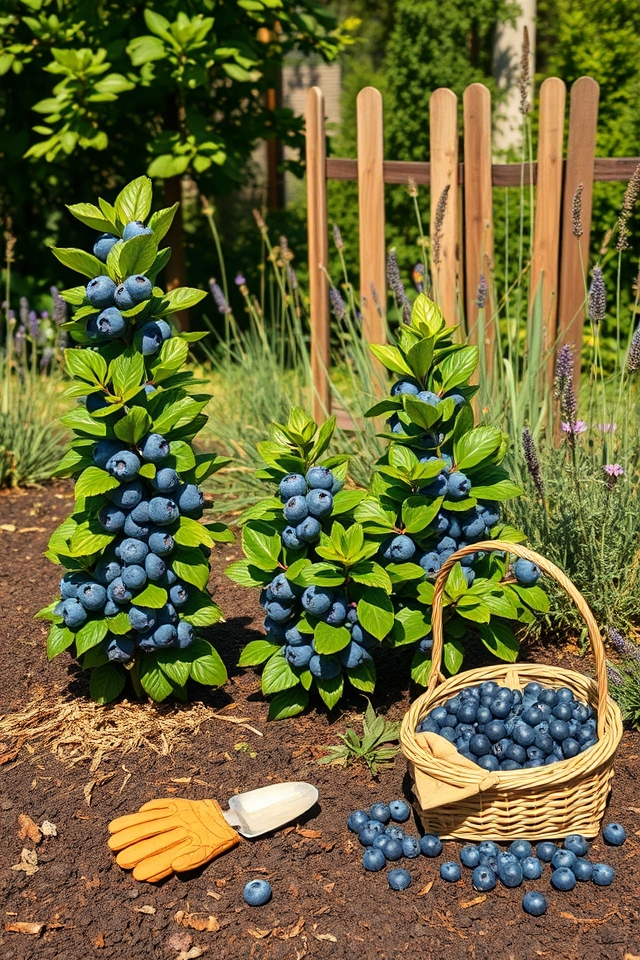
When choosing blueberry varieties for your garden, consider your climate and soil conditions. Northern highbush blueberries thrive in colder regions, while southern highbush and rabbiteye varieties suit warmer climates. Select varieties with different ripening times—early, mid, and late season—to enjoy a prolonged harvest. Also, check for disease resistance and flavor profiles to match your preferences. Consulting local nurseries or extension services can help you pick the best varieties for your specific area.
Selecting the Ideal Location for Blueberry Bushes

When selecting the ideal location for blueberry bushes, choose a spot with full sun, receiving at least 6-8 hours of direct sunlight daily for best growth and fruit production. Make sure the area has well-drained, acidic soil with a pH between 4.5 and 5.5. Avoid low-lying areas prone to frost or water pooling. Provide shelter from strong winds to protect the bushes, and allow enough space for air circulation to prevent disease.
Preparing Acidic Soil for Optimal Growth
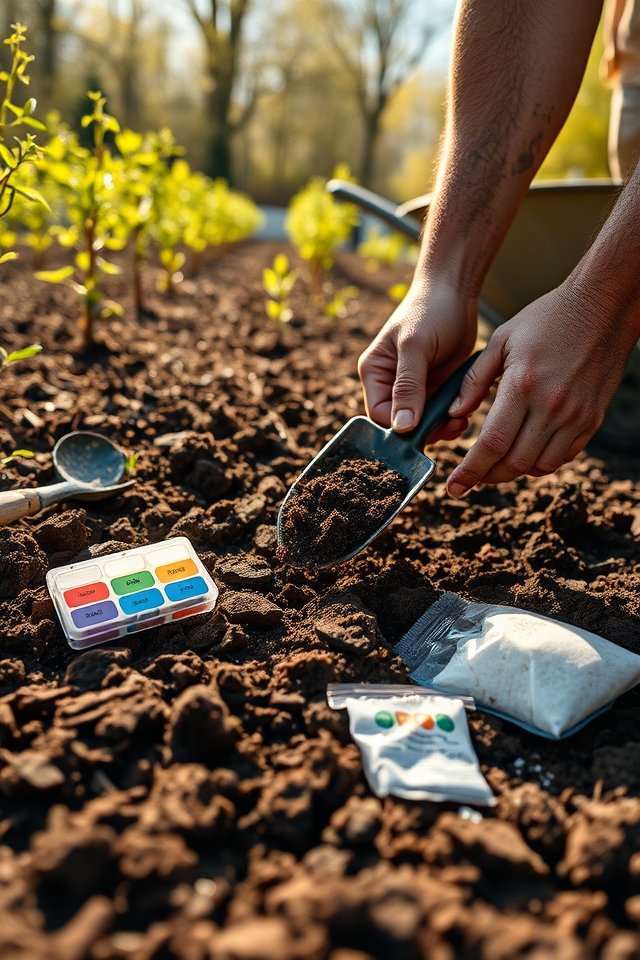
Blueberries thrive in acidic soil with a pH between 4.5 and 5.5. To prepare the soil, test its pH using a home kit or send a sample to a local extension service. If the pH is too high, amend the soil with elemental sulfur, iron sulfate, or organic matter like peat moss to lower it. Mix these amendments into the top 6-12 inches of soil several months before planting to achieve ideal conditions for growth.
Container Gardening for Small Spaces
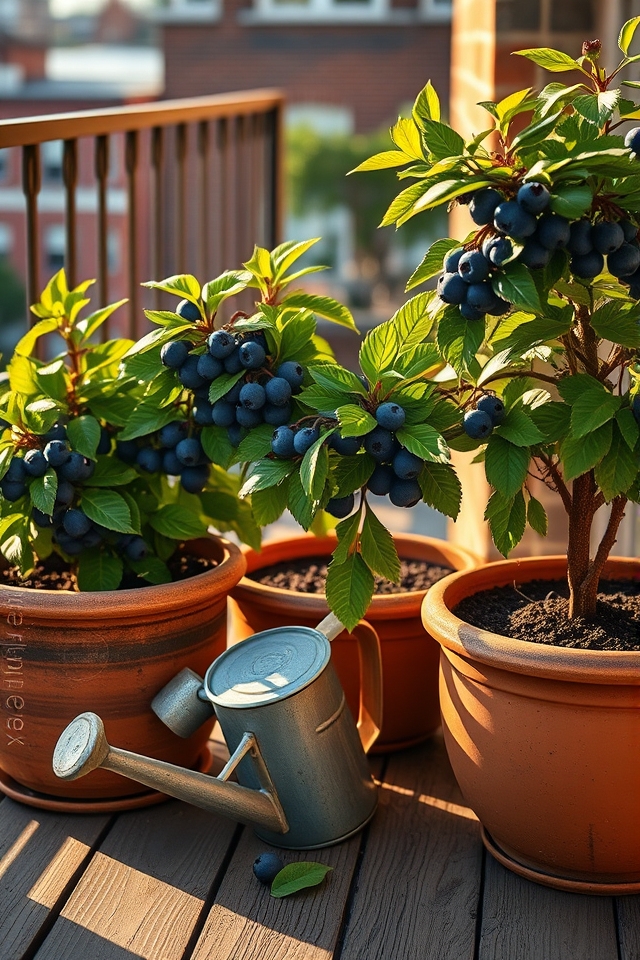
Container gardening is a perfect solution for growing blueberry bushes in small spaces like balconies, patios, or urban yards. Use large pots or containers with good drainage, filled with acidic, well-draining soil to mimic blueberries’ natural growing conditions. Place them in a sunny spot, ensuring they receive at least 6 hours of sunlight daily. Regular watering and occasional fertilizing with an acid-loving plant formula will help your blueberry bushes thrive in limited spaces.
Raised Bed Designs for Better Drainage
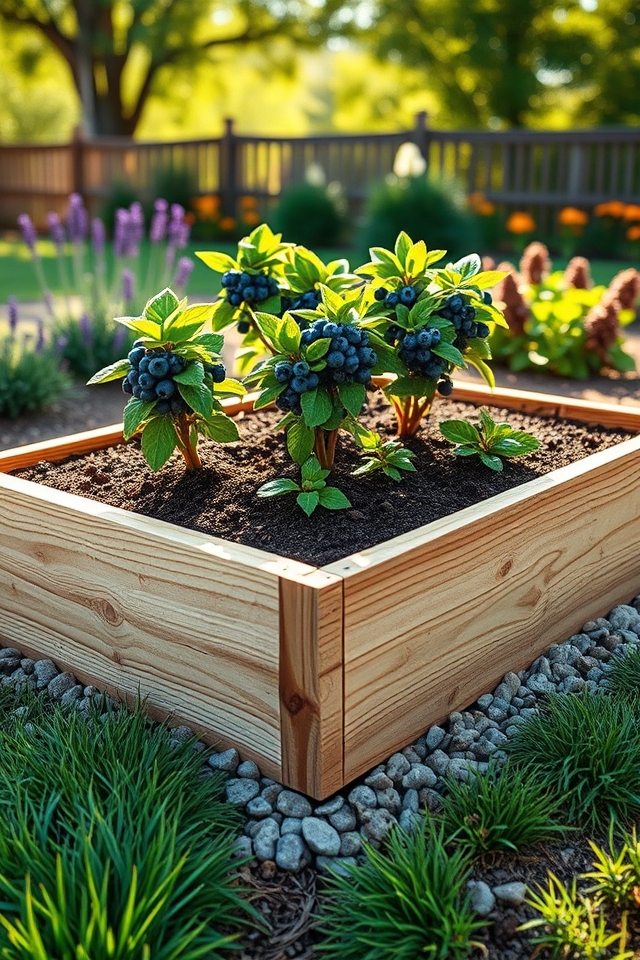
Raised bed designs are an excellent choice for growing blueberry bushes, as they provide better drainage and soil control. By elevating the planting area, excess water can easily escape, preventing root rot in blueberries, which thrive in well-drained, acidic soil. Use materials like wood, stone, or metal to construct sturdy beds, and fill them with a mix of peat moss, pine bark, and compost to create the ideal growing environment for healthy bushes.
Companion Planting to Boost Blueberry Health
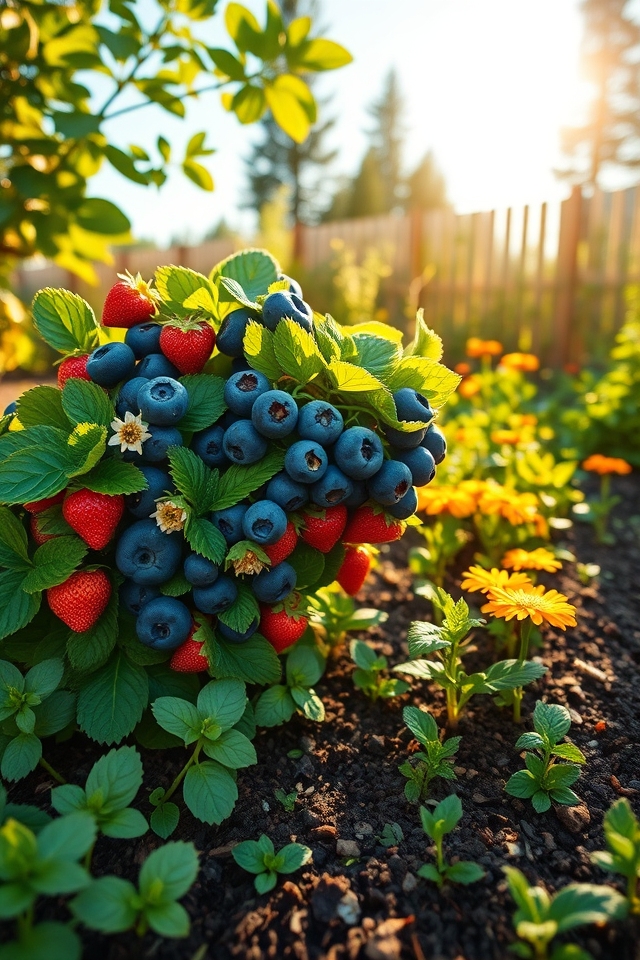
Companion planting can greatly enhance blueberry health by improving soil conditions and deterring pests. Planting blueberries alongside plants like strawberries, which share similar soil needs, can optimize growth. Additionally, flowers such as marigolds repel harmful insects, while herbs like basil deter pests naturally. Incorporating nitrogen-fixing plants like clover nearby can enrich the soil, providing essential nutrients for blueberries. This strategic pairing creates a thriving ecosystem, supporting robust blueberry bushes and better yields.
Mulching Techniques for Moisture Retention
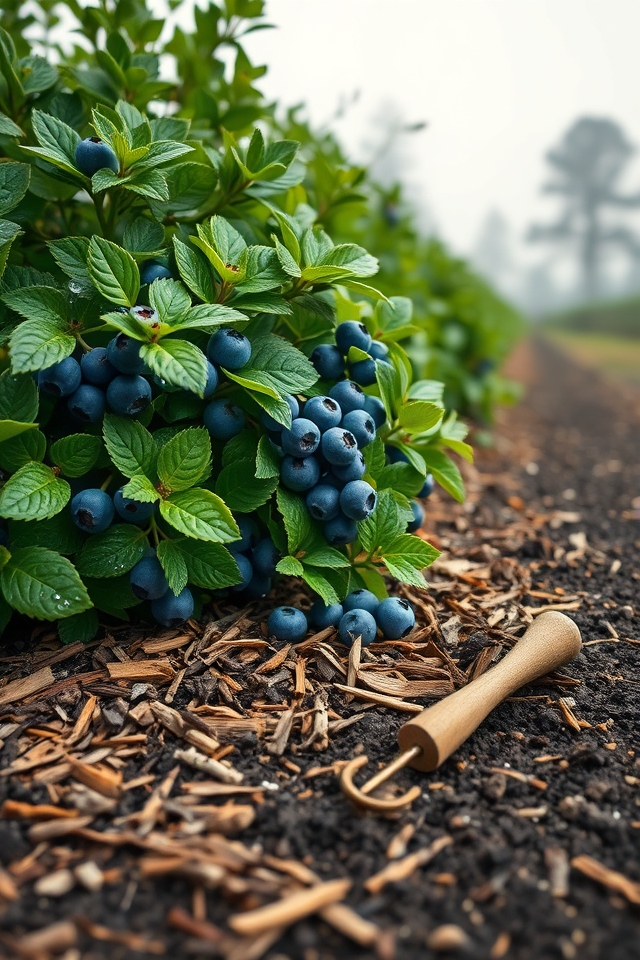
Mulching is essential for retaining moisture around blueberry bushes, which thrive in consistently damp soil. Apply a 2-4 inch layer of organic mulch, such as pine bark, wood chips, or sawdust, around the base of the plants. This helps lock in moisture, suppress weeds, and maintain soil acidity, which blueberries prefer. Keep mulch a few inches away from the stems to prevent rot, and replenish it annually to maintain effectiveness.
Watering Strategies for Thriving Bushes
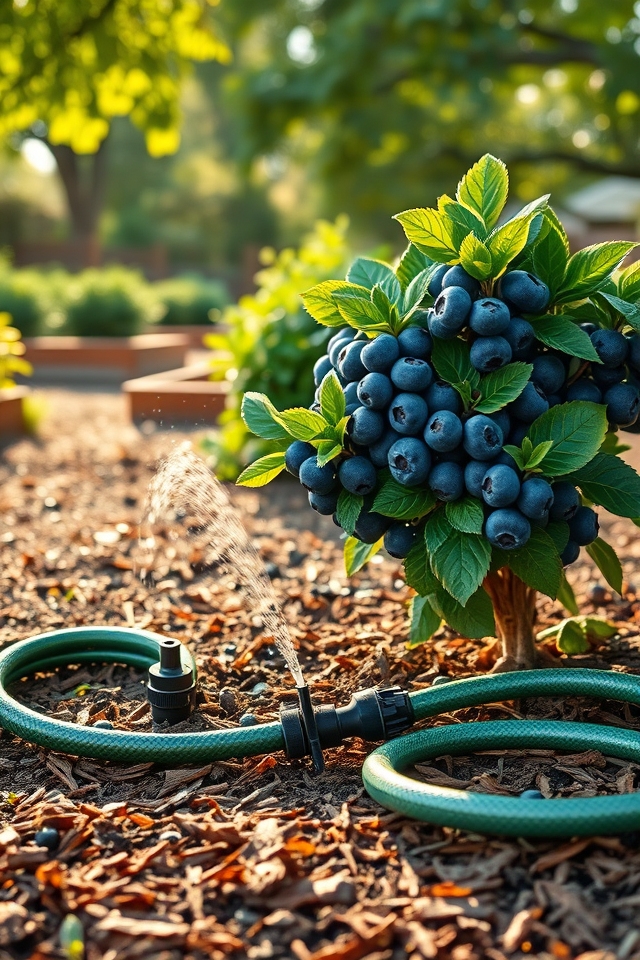
Effective watering is essential for thriving blueberry bushes. These plants prefer consistently moist, well-drained soil with a pH between 4.5 and 5.5. Water deeply once or twice a week, providing about 1-2 inches of water, especially during dry spells or fruiting periods. Avoid overhead watering to prevent fungal issues; instead, use drip irrigation or soaker hoses to target the root zone. Mulching with pine bark or wood chips helps retain moisture and reduce watering frequency.
Pruning Tips for Maximum Berry Production
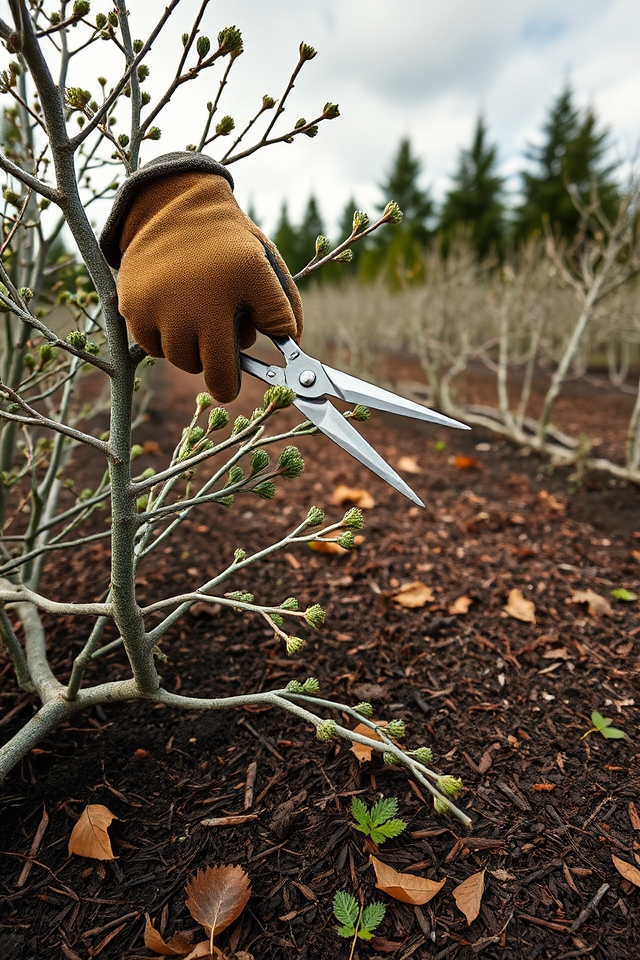
Pruning is essential for maximizing blueberry bush productivity. Remove dead, damaged, or diseased branches to improve air circulation and light exposure. Cut back older canes to encourage new growth, as younger wood produces more berries. Prune during late winter or early spring before new growth begins. Thin out crowded areas to prevent competition for nutrients. Regular pruning maintains bush health, boosts yield, and guarantees larger, tastier blueberries for your garden harvest.
Protecting Your Plants From Pests Naturally
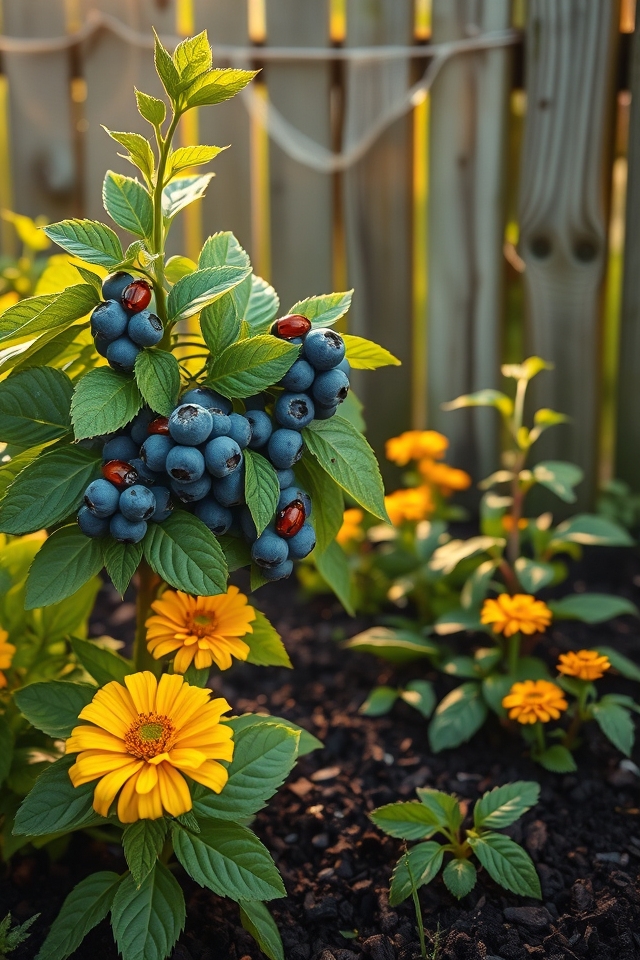
Protecting your blueberry bushes from pests naturally is essential for a healthy garden. Use companion planting with herbs like basil or marigolds to repel insects. Introduce beneficial insects, such as ladybugs, to control aphids. Apply neem oil or insecticidal soaps as safe, organic treatments. Additionally, use physical barriers like netting to keep birds and larger pests away. These methods help maintain an eco-friendly garden while safeguarding your blueberry plants from harm.
Fertilizing for Nutrient-Rich Harvests

Fertilizing blueberry bushes is essential for ensuring nutrient-rich harvests. Use a balanced, acidic fertilizer, such as one formulated for azaleas or rhododendrons, to maintain the soil’s pH between 4.5 and 5.5. Apply fertilizer in early spring before new growth starts and again in late spring. Avoid over-fertilizing, as it can harm the plants. Additionally, incorporate organic matter like compost or pine bark to enhance soil fertility and support healthy, productive bushes.
Creating a Pollinator-Friendly Environment
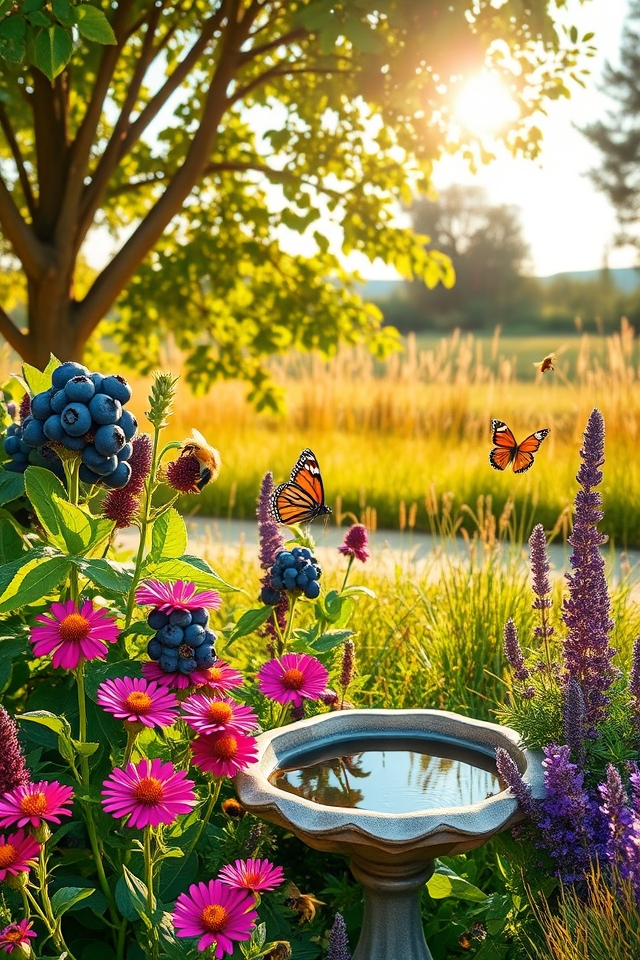
Creating a pollinator-friendly environment around your blueberry bushes is essential for successful fruit production. Plant native flowers like bee balm, coneflowers, and lavender nearby to attract bees, butterflies, and other pollinators. Avoid using harmful pesticides that can deter or harm these beneficial insects. Provide a water source, such as a shallow birdbath, for pollinators to drink from. By fostering a welcoming habitat, you’ll guarantee better pollination and a bountiful blueberry harvest.
Harvesting and Storing Your Blueberries
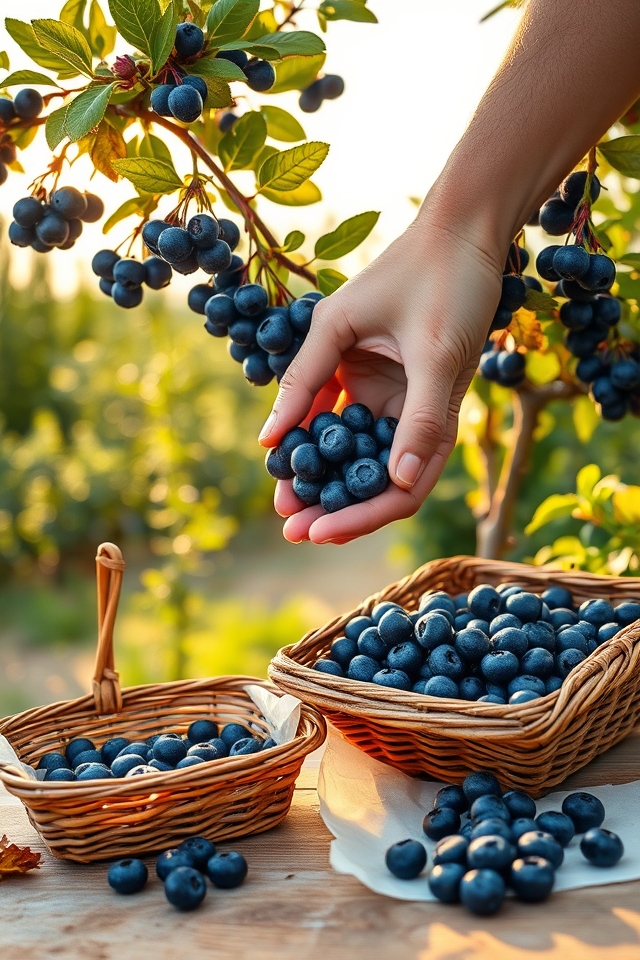
Harvesting blueberries is a rewarding task when done at the right time. Pick berries when they are fully ripe, displaying a deep blue color with a slight frosty sheen, usually from late spring to early summer. Gently pluck them by hand to avoid damaging the bush. Store fresh blueberries in a breathable container in the refrigerator for up to two weeks. For longer storage, freeze them on a tray before transferring to airtight bags.
Celebrating Your Yield With Muffin Recipes

Celebrate your blueberry harvest with delightful muffin recipes that showcase your garden’s bounty. Whip up classic blueberry muffins with a tender crumb and bursts of juicy fruit, or experiment with variations like lemon-blueberry for a zesty twist. Add a crumb topping for extra texture or mix in nuts for a hearty bite. Baking these treats is a perfect way to share your yield with family and friends, turning your harvest into sweet memories.





